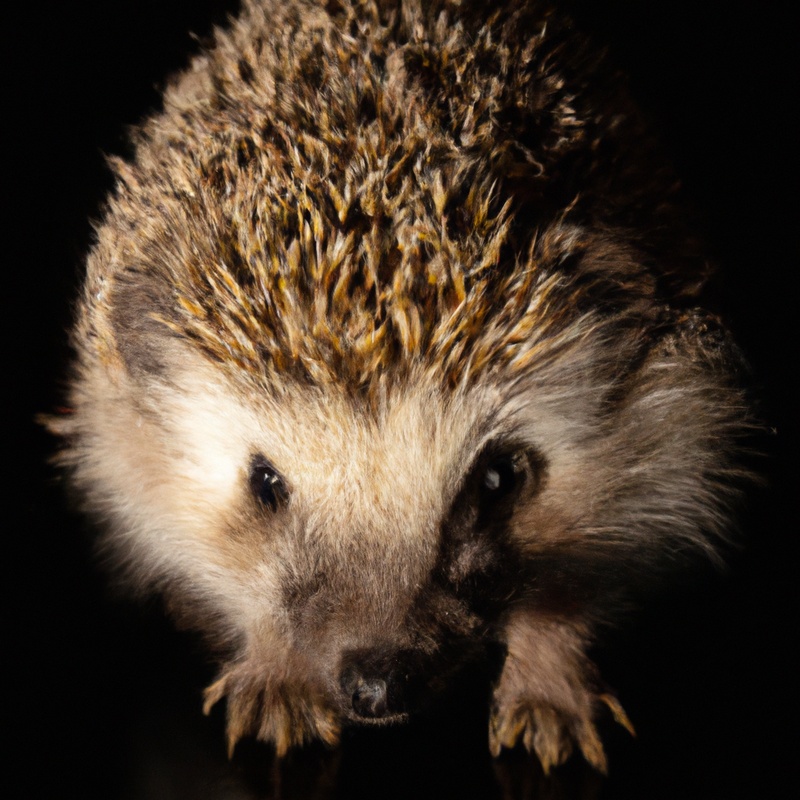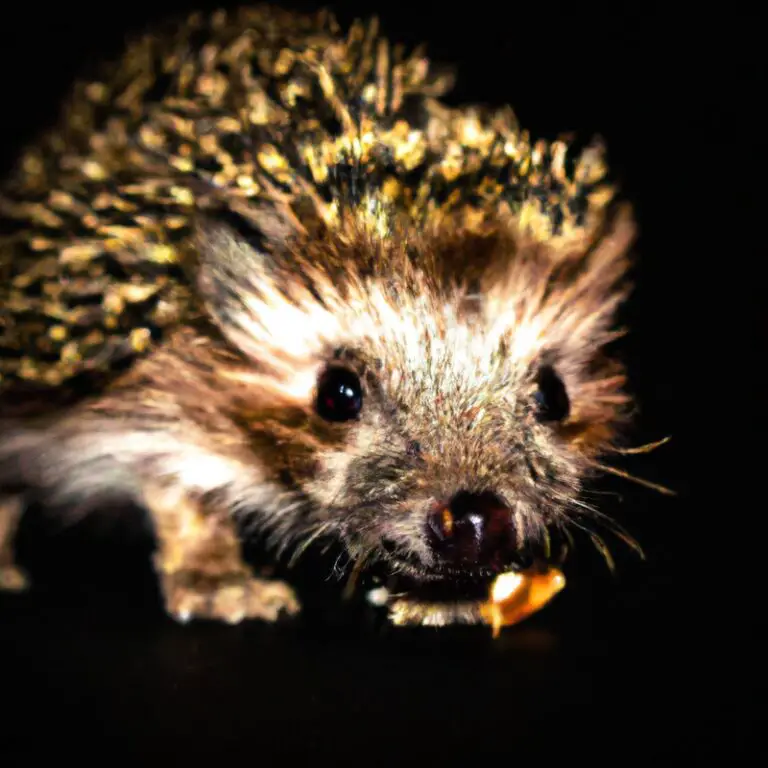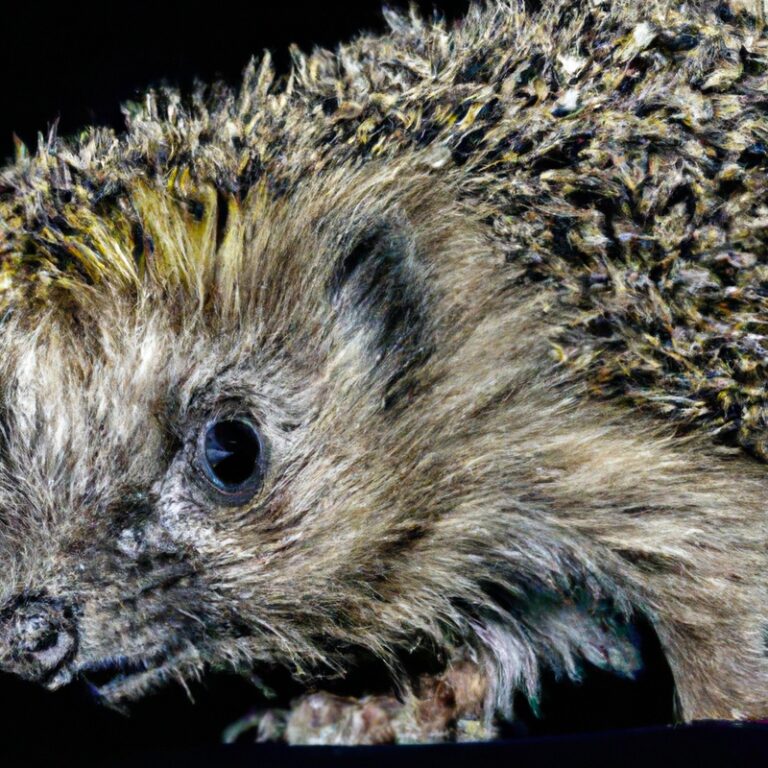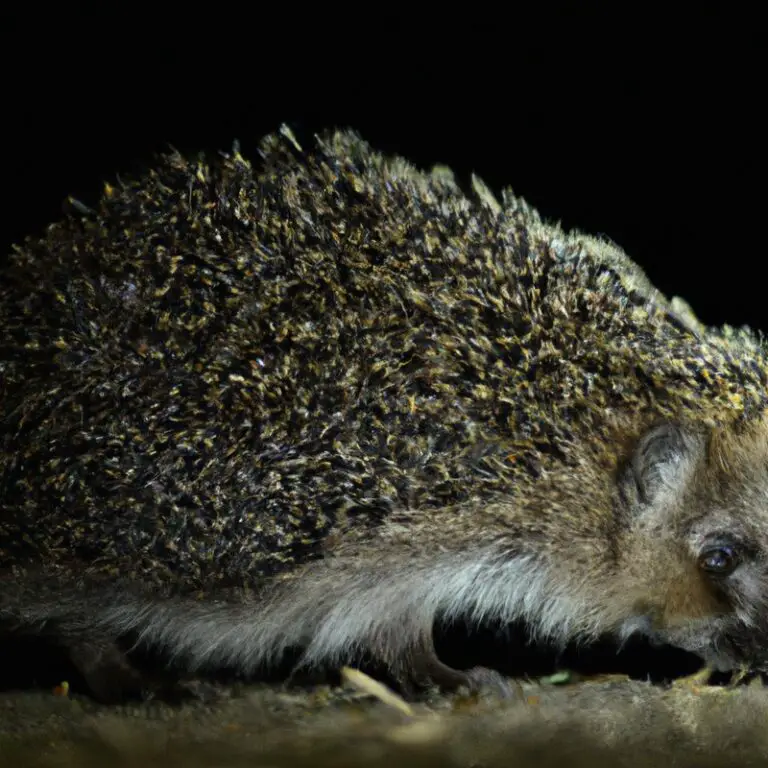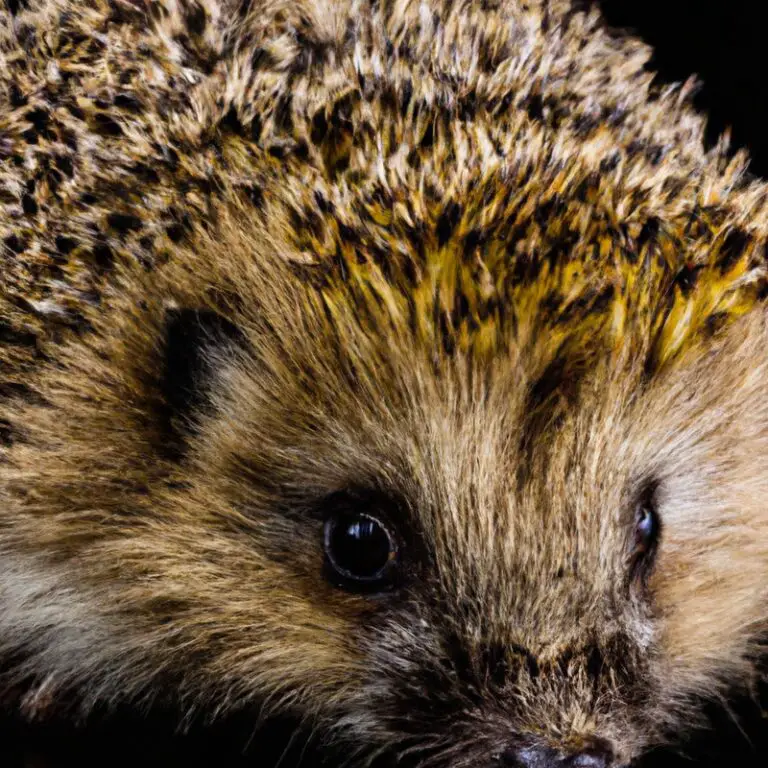How Do Hedgehogs Affect Local Ecosystems?
Key Takeaways:
- Hedgehogs play a crucial role in controlling insect populations in local ecosystems.
- The presence of hedgehogs can positively impact plant growth and seed dispersal in their habitats.
- Hedgehogs help nurture soil health by creating burrows and aiding in nutrient distribution.
- The decline in hedgehog populations may have detrimental effects on local ecosystems, including an increase in pests and decreased biodiversity.
Have you ever wondered how hedgehogs, those adorable little spiky creatures, impact their local ecosystems?
It turns out that hedgehogs play a crucial role in maintaining the delicate balance of nature.
As insectivores, they help control insect populations, acting as nature’s pest control.
Not only that, these prickly mammals also assist in seed dispersal, influencing plant diversity.
But that’s not all – hedgehogs even contribute to soil health and influence predator-prey dynamics.
In this article, we’ll explore the fascinating ways hedgehogs shape local ecosystems and the potential consequences of their decline.
Get ready to discover how these pint-sized creatures make a big impact!
| Aspect | Impact |
| Food source | Hedgehogs primarily feed on insects and other invertebrates, helping to control their populations. |
| Seed dispersal | Hedgehogs can help with seed dispersal by consuming fruits and then spreading the seeds in their droppings. |
| Predators | Hedgehogs are prey to various predators, such as birds of prey and carnivorous mammals, acting as an important part of the food chain. |
| Competition | Hedgehogs may compete with other small mammals, such as shrews and mice, for resources like food and nesting sites. |
| Nest destruction | Hedgehogs may inadvertently cause damage by digging and uprooting vegetation while creating nests or searching for food. |
| Habitat modification | By foraging and creating burrows, hedgehogs can change the structure of the habitat to some extent, potentially affecting other species that rely on specific habitat conditions. |
Hedgehogs as insectivores
Hedgehogs play a vital role as natural insectivores.
Understanding hedgehogs’ diet
Hedgehogs are insectivores, meaning their diet mainly consists of insects.
They eat a variety of insects, including beetles, slugs, worms, and caterpillars.
In addition to insects, they may also consume small reptiles, birds, eggs, and fruits.
However, their primary source of nutrition comes from insects.
This diet allows hedgehogs to control insect populations, helping to maintain the balance in local ecosystems.
It’s important to note that feeding hedgehogs a balanced diet in captivity is crucial for their health and well-being.

Role of hedgehogs in controlling insect populations
Hedgehogs play a significant role in controlling insect populations. These prickly creatures are insectivores, meaning that insects make up a large part of their diet.
Hedgehogs have a voracious appetite for common garden pests like slugs, snails, and beetles.
By feasting on these insects, they help keep their populations in check, preventing them from becoming pests themselves. Hedgehogs are a natural and eco-friendly way to control insect populations in local ecosystems, making them valuable allies for gardeners and farmers alike.
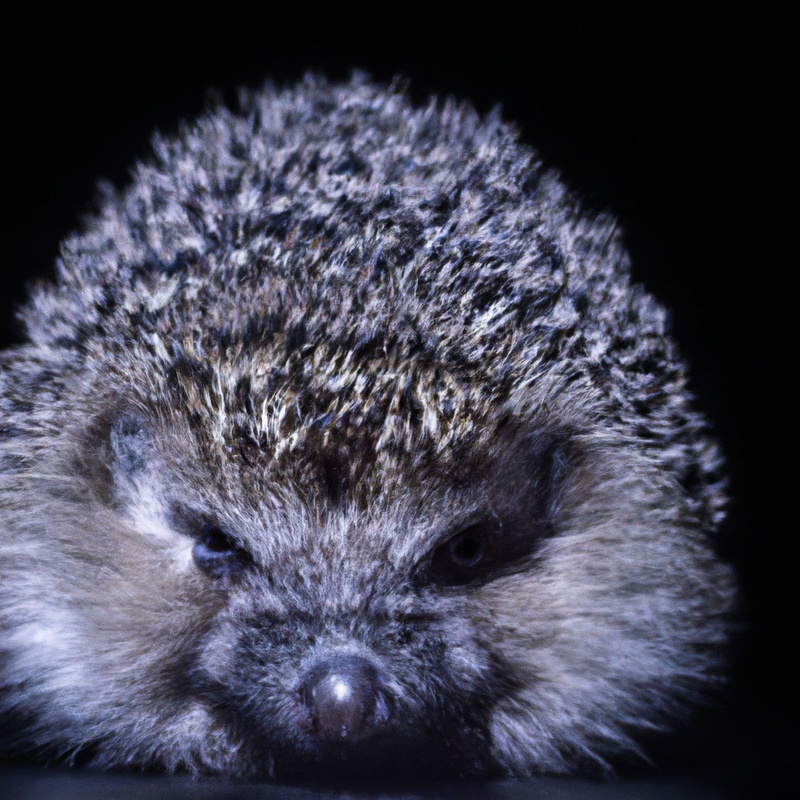
Potential effects of hedgehog decline on insect ecosystems
The decline of hedgehogs can have potential effects on insect ecosystems. Hedgehogs are natural predators of insects, particularly those that harm gardens and crops.
As hedgehog numbers decline, there may be an increase in the population of these harmful insects, leading to potential damage to plants and agriculture.
Moreover, hedgehogs also help control the population of other small mammals, which can indirectly impact the insect ecosystem. The loss of hedgehogs could disrupt the delicate balance of the local ecosystem and have far-reaching consequences for insect populations and their interactions with other organisms.
Hedgehogs and seed dispersal
Hedgehogs play a role in seed dispersal by accidentally carrying seeds on their fur and spines as they move through their habitat.
Hedgehogs as seed dispersers
Hedgehogs play an important role as seed dispersers in their local ecosystems. As they move around, their spiky coats can pick up seeds from plants, which then stick to the spines.
When hedgehogs travel to different areas, they unintentionally drop these seeds along the way, helping to distribute them and promote plant growth.
This process aids in maintaining biodiversity and the regeneration of plant communities. Hedgehogs contribute to the natural cycle of seed dispersal and are valuable contributors to their ecosystems.
Implications of hedgehogs’ seed dispersal abilities on plant diversity
Hedgehogs’ seed dispersal abilities can have significant implications for plant diversity.
As hedgehogs move through their environment, they inadvertently pick up seeds on their spines and fur.
When these seeds fall off as hedgehogs continue their journeys, they contribute to the dispersal and germination of plants in new areas.
This can help increase the genetic diversity and distribution of plant species, ultimately enhancing ecosystem resilience and supporting the overall health and survival of plant communities.
Additionally, hedgehogs may play a role in shaping plant composition by selectively dispersing certain seeds over others based on their foraging habits.
Impact of hedgehog decline on plant communities
The decline in hedgehog populations can have a significant impact on plant communities.
Hedgehogs play a vital role in seed dispersal; as they move around, seeds attach to their prickly fur and are carried to different locations, helping to spread plant species.
With fewer hedgehogs, seed dispersal decreases, potentially leading to a decline in plant diversity and affecting the overall balance of local ecosystems.
Additionally, hedgehogs also contribute to soil health by aerating the soil as they dig for food, which can promote plant growth.
Hedgehogs and soil health
Hedgehogs play a significant role in maintaining soil health through their foraging behavior and nutrient cycling. The absence of hedgehogs can negatively impact soil fertility.
Hedgehogs’ foraging behavior and soil disturbance
Hedgehogs’ foraging behavior can play a crucial role in soil disturbance within their local ecosystems. As they search for food, hedgehogs dig into the soil, creating holes and disruptions.
This disturbance can result in the mixing of nutrients, improved aeration, and enhanced drainage in the soil.
It also promotes microbial activity and increases the decomposition of organic matter. Overall, hedgehogs’ foraging behavior contributes to maintaining healthy soil and supporting the functionality of the ecosystem.
Influence of hedgehogs on nutrient cycling in soil
Hedgehogs play a role in nutrient cycling in soil.
As they forage for food, they disturb the soil, which helps to break down organic matter and increase nutrient availability.
Additionally, their droppings, known as hedgehog scat, contain valuable nutrients that enrich the soil.
This enhances the overall fertility and health of the soil, benefiting plants and other organisms in the ecosystem.
Hedgehogs are important contributors to maintaining a balanced nutrient cycle in their local habitats.
Consequences of hedgehog absence on soil fertility
The absence of hedgehogs can have significant consequences on soil fertility.
Hedgehogs play a vital role in maintaining the balance of soil ecosystems.
They have a diet that includes insects, slugs, worms, and other invertebrates that can impact soil health.
Without hedgehogs, populations of these creatures can increase, leading to imbalances and potential damage to soil fertility.
Hedgehogs also contribute by dispersing seeds through their droppings, aiding in plant diversity.
So, their absence can disrupt these processes, ultimately affecting the overall health and composition of the soil.
Hedgehogs and predator-prey relationships
Hedgehogs play a role as prey in local food chains and have interactions with other predators.
Hedgehogs as prey and their role in food chains
Hedgehogs play a unique role in food chains as both predators and prey.
As prey, they are important food sources for various predators, including foxes, owls, and badgers.
Their presence in local ecosystems provides a crucial source of energy and sustenance for these predators.
Additionally, hedgehogs contribute to the balance of their ecosystems by regulating populations of invertebrates, such as insects and slugs, which they primarily feed on.
This helps maintain the overall health and biodiversity of the ecosystem they inhabit.
Interaction between hedgehogs and other predators
Hedgehogs have very interesting interactions with other predators in their ecosystems. They typically encounter larger predators, such as foxes and badgers.
These encounters can be both positive and negative.
On one hand, hedgehogs may benefit from the presence of these predators because they help control the populations of smaller prey species, like insects and rodents, which hedgehogs feed on. On the other hand, hedgehogs can also become prey themselves, as they are vulnerable to larger predators.
This dynamic creates a complex balance within the ecosystem, where hedgehogs depend on the presence of other predators while also facing the risk of predation.
Cascading effects of hedgehog disappearance on local ecosystems
The disappearance of hedgehogs has cascading effects on local ecosystems. Hedgehogs play a vital role in controlling populations of insects, slugs, and snails, which can have a negative impact on plants and other animals.
Without hedgehogs, these prey species can multiply rapidly, leading to imbalances in the ecosystem.
Additionally, hedgehogs contribute to soil health by aerating the soil as they forage for food. Their disappearance can therefore disrupt important ecological processes.
Conservation implications
Conserving hedgehogs is essential for maintaining ecosystem stability. Support hedgehog populations by taking practical steps for their protection.
Threats faced by hedgehogs in urban and rural environments
Hedgehogs face several threats in both urban and rural environments.
In urban areas, the loss of green spaces and the increasing use of pesticides can lead to a decrease in their natural habitats and food sources.
They also face the danger of getting hit by cars and encountering hazards like litter and open drains.
In rural areas, loss of hedgerows and intensification of farming practices can disrupt their natural foraging and breeding habits.
Predators such as badgers and foxes also pose a threat to hedgehogs in both environments.
Importance of protecting hedgehog populations for ecosystem stability
Protecting hedgehog populations is vital for maintaining ecosystem stability.
Hedgehogs play a crucial role in controlling pests like slugs and snails, which can cause damage to plants and crops.
By keeping these populations in check, hedgehogs help to maintain a balanced ecosystem and prevent outbreaks of these pests.
Additionally, hedgehog droppings act as a natural fertilizer, promoting healthy soil and plant growth.
Losing hedgehogs could disrupt the delicate balance of an ecosystem, making their protection essential.
Practical steps to support hedgehog conservation efforts
If you want to support hedgehog conservation efforts, here are some practical steps you can take:
- Create a hedgehog-friendly garden by leaving wild areas, providing hedges for shelter, and avoiding the use of chemicals.
- Install hedgehog highways in your fence or wall to allow hedgehogs to roam freely between gardens.
- Provide food and fresh water for hedgehogs, such as pet food or specialized hedgehog food, placed in a shallow dish.
- Create a hedgehog house or provide a pile of leaves or logs as a cozy nesting spot.
- Spread awareness about hedgehog conservation by educating others and encouraging them to take action too.
These small steps can make a big difference in preserving hedgehog populations and their natural habitats.
Frequently Asked Questions (FAQs)
What do hedgehogs eat?
Hedgehogs are omnivores, which means they eat both plants and animals. Their diet mainly consists of insects, such as beetles, slugs, and caterpillars.
They also enjoy snails, frogs, and worms.
Hedgehogs have been known to eat small mammals and birds’ eggs as well. Additionally, they may consume fruits, berries, and mushrooms.
However, it’s important to note that hedgehogs are not able to digest dairy products, so avoid giving them milk or cheese.
Are hedgehogs harmful to gardens?
Hedgehogs are generally not harmful to gardens. In fact, they can be beneficial as they eat insects, slugs, and other pests that can damage plants.
However, they may occasionally uproot plants while searching for food or create small burrows.
To minimize any potential impact, you can provide hedgehogs with alternative feeding areas away from delicate plants or use protective measures, such as fencing or planting deterrents. Overall, hedgehogs can be a welcome addition to your garden ecosystem.
How can I attract hedgehogs to my yard?
To attract hedgehogs to your yard, you can take a few simple steps. Provide them with food by leaving out shallow dishes of cat or dog food, as well as fresh water.
Create a safe and secure habitat by leaving areas of undergrowth and providing piles of leaves and logs for them to nest in.
Avoid using pesticides and chemicals that may harm hedgehogs, and ensure there are small holes or gaps in your fences to allow them access. Finally, be patient and give them time to find and explore your yard.
Final Verdict
Hedgehogs have a significant impact on local ecosystems in multiple ways. As insectivores, they play a crucial role in controlling insect populations, which helps maintain ecological balance.
Additionally, their seed dispersal abilities contribute to plant diversity and can influence plant communities.
Hedgehogs also affect soil health through their foraging behavior and influence nutrient cycling and soil fertility. Furthermore, as both prey and predator, their presence affects the dynamics of predator-prey relationships within food chains.
The decline of hedgehogs poses serious threats to these ecosystems, highlighting the importance of their conservation.
Taking practical steps, such as creating hedgehog-friendly habitats and minimizing hazards, can help protect these enchanting creatures and their vital role in sustaining local ecosystems.

